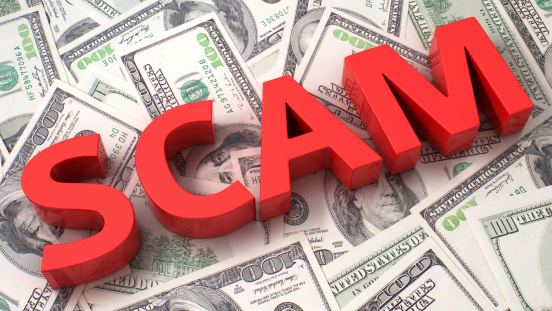You have a report due in just a few hours. You just need to make a few more edits to it, and you really need to check that one fact to make sure you’re stating it correctly. Now where was that website? Clicking what looks like the right one takes you somewhere unfamiliar. Suddenly the screen goes crazy, windows popping open, your mouse is out of control. Help! Yes, here it comes: “Your computer has been infected with the Schmoozer virus. Please click the button below to connect to tech support, so that we can help you remove this virus. Failure to clean the infection from your computer could result in complete loss of data.”

What should you do?
This is a scam. Unfortunately, it’s a pretty old one. It cycles around from time to time, because it is very effective at getting people to give control of their computer to a total stranger. Clicking the link will NOT connect you to tech support. It will instead allow a remote connection to a user somewhere else who will be able to not only install malicious software (malware) on your computer, but also grant that person complete access to your entire computer.
You may not think that you have anything worth taking, but that other user can poke around in your computer and see if you have a file that contains your bank password, your email password, etc. They may look to see if they can find little pieces of information about you that, by themselves, don’t say much, but when added together, these little pieces of information can paint enough of a picture for a cyber thief to steal your identity. Additionally, “taking something” is not the only thing a malicious user is after.
Most commonly this type of scam is used to configure your computer to be part of a botnet, a network of remotely-controlled computers, or bots, to send out spam in massive quantities. You may not notice anything unusual for quite some time after your computer becomes a bot. Eventually you may see some performance problems, you may see more pop-up windows, and you may get notices from your internet service provider that your network use is unusually high. There are some websites that may blacklist your computer from connecting to them if your computer has been identified as sending out spam messages.
Cleaning up after an infection of this type can be unpleasant. The people that installed it aren’t going to want it uninstalled, so it may be difficult to remove. It may take several runs of a malware remover, and it may take using several different methods to get all the elements removed. Even after these measures, there may still be elements that must be manually removed.
Don’t click on that button.
It’s not by any means the only measure you should take to keep from getting a computer infection. However, it is very important to know that no legitimate tech support company is going to contact you in the heat of an infection.
It can be helpful to have a relationship with a technology support firm before you find out your situation is desperate. Sensible Systems, LLC. is the trusted choice when it comes to staying ahead of the latest information technology tips, tricks, and news. Contact us at (877) 773-6797 or send us an email at {email} for more information.
Contact Us

